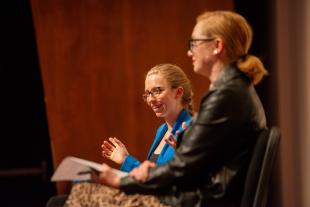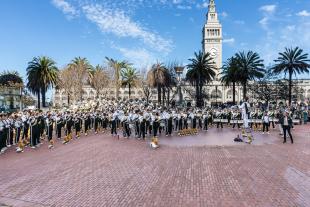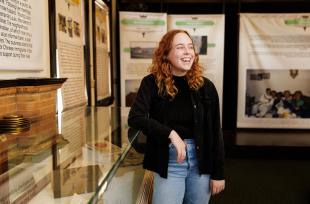Wanna Hear a Ghost Story? Here's Why We Love Them, According to Professors
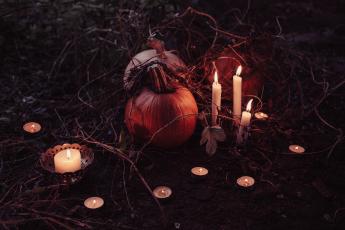
As we get closer to Halloween (and bulk-buy candy at Costco and Target), many folks are also dusting off ghost stories to tell at parties, cracking open a Stephen King novel, or frantically Googling which streaming service has their favorite scary movie for a good seasonal watch.
But what draws us to these chilling tales? Cal Poly News spoke to three English professors who have studied horror in film or literature to learn more.
Doug Keesey is a professor of film and literature who has published a book on 21st century horror films. Professor Regulus Allen, who created a course on Gothic monsters, has extensively studied Mary Shelley’s “Frankenstein” as part of her specialty in British literature from 1660 through 1840. Professor Brenda Helmbrecht is researching the impact of ghost stories in the California missions and will teach a class next quarter on horror and film.
Their answers have been edited and condensed for clarity.
Why do you think people are fascinated by the creepy, spooky and macabre?
Keesey: People love horror for different reasons. For some, it’s about taking risks and surviving shocks, a “dare to enter that haunted house” moment: see “Hell Fest.” For others, it’s less about outright terror and more about those pleasurable, spine-tingling moments that come from a slow-building creepiness: see the alien-abduction chiller “Communion,” starring Christopher Walken.
Allen: I feel like there's two main reasons. One is when people are bored and they kind of want something to jolt them into a pleasing state of anxiety.
But then, ironically and inversely, when people are anxious about something, they sometimes like a scary story to help them examine the fears at a distance and possibly manage them. I feel like both of those explanations come into play for Mary Shelley's particular story. “Frankenstein” originated as both a desire to relieve boredom and a way to allow Mary Shelley to work out her anxieties.
Helmbrecht: I’ve had multiple people tell me they like to watch scary movies to relax, which seems counterintuitive, right? But I think that’s because it’s a fully immersive escape from our daily lives, where we’re looking at things that scare us, but there’s not much at stake — whereas in the world around us, there are a lot of things that scare us and so much more at stake. In a weird way, there’s something kind of empowering in knowing that the anxiety and tension you’re feeling is temporary and you know it’ll be over when the movie is done.
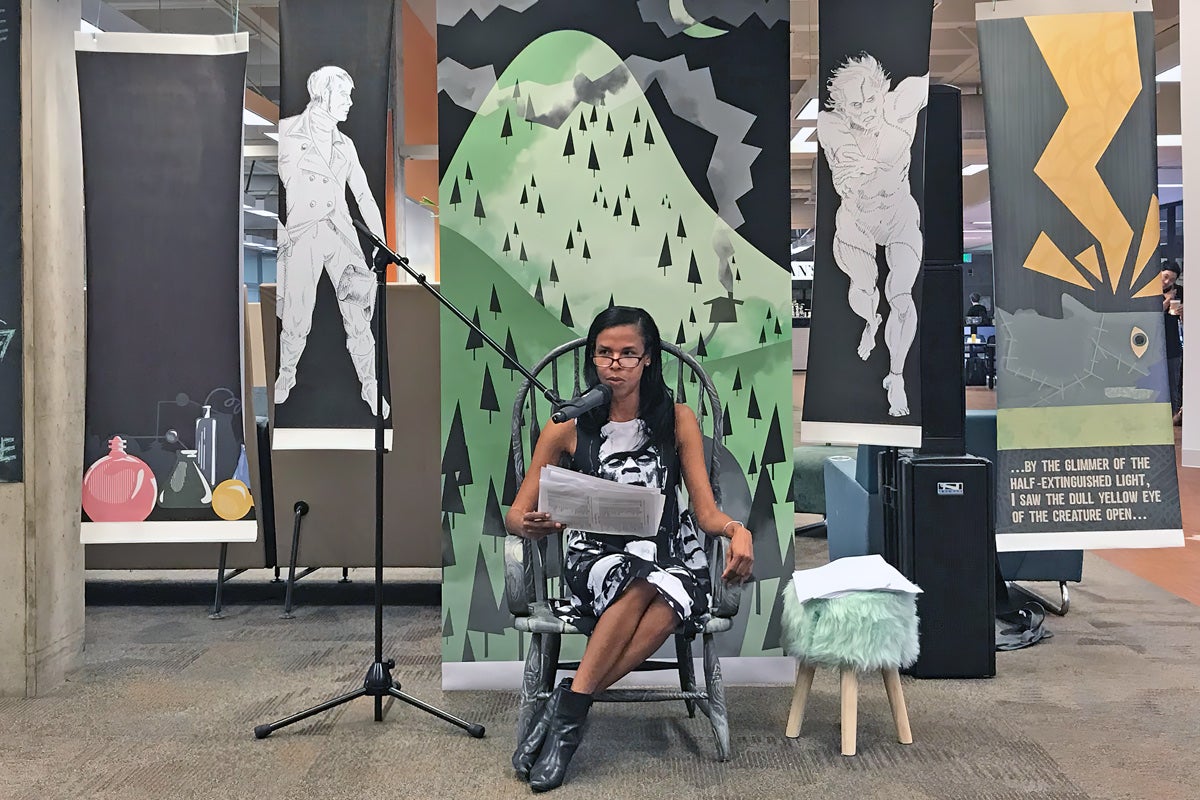
Different horror movies explore different kinds of social and cultural anxieties — including around gender, race and sexuality. They can help you process things going on in your own life and make it more manageable in a sense — horror films are uniquely capable of portraying our experiences.
What do you think the things we fear in our stories say about the things we fear in society?
Keesey: I see horror as a way of exploring our fears, a place for confronting them and figuring out what, if anything, we should really be afraid of. I define a progressive horror film as one that leads us toward overcoming our fear of difference, enlarging our understanding of and sympathy for “othered” persons. By contrast, regressive horror solidifies old fears and refortifies the boundaries between us and “them,” confirming and even exacerbating phobic responses. Most horror fiction and film are actually some combination of progressive and regressive, since horror is all about blurred lines and ambivalent feelings.
Allen: There are a lot of anxieties of the early 19th century represented in “Frankenstein,” including the predominantly white readership’s fear of the racialized other, since some critics interpret the creature to represent people of African or Asian descent. But we also see climate anxiety: the story was written in 1816, which was called the year without a summer. A volcano in Indonesia, Mt. Tambora, had erupted in 1815 and caused all these climate disruptions throughout the world — the downturn in weather led to lots of crop failures, mass starvation and disease. Geneva, Switzerland, was filled with climate refugees that contemporary accounts likened to the walking dead. You can see how that would inspire something like the creature. This was also an age of troubling technological innovation and experiments with galvanism, which in the book is what animates the collected corpses that become the creature.
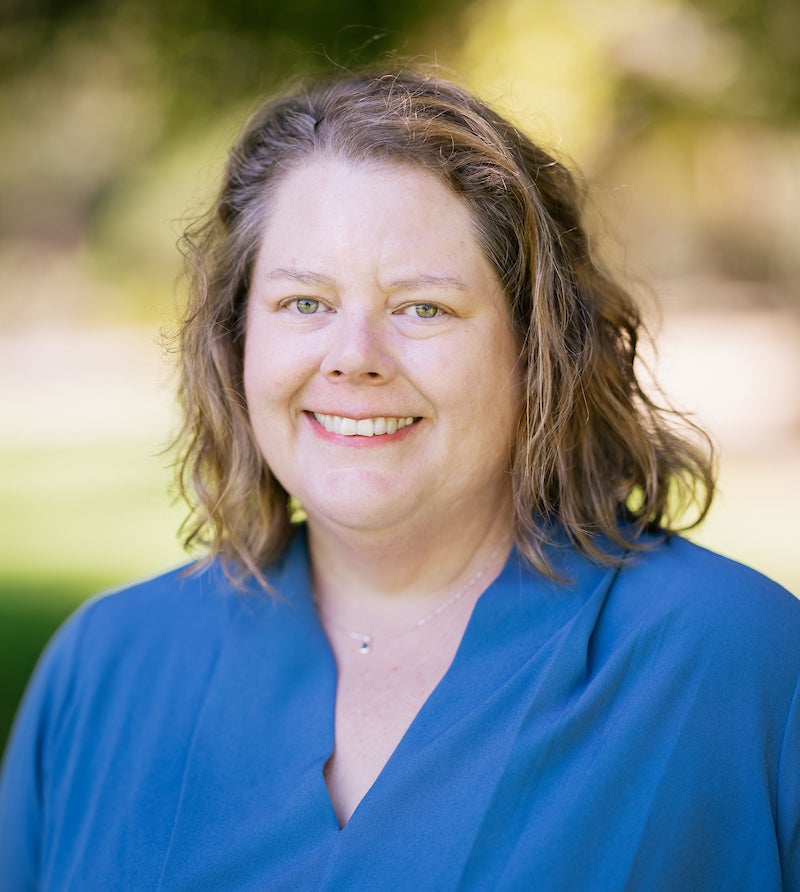
There are also personal anxieties: Mary Shelley’s first child was born prematurely in February 1815 and died a month later. As she’s writing this novel, she’s dealing with having lost her child, and a lot of maternal anxiety comes out in the story. “Frankenstein” is very much about what responsibility a creator owes to its creation. It’s a story about parenting, and the source of the monstrosity is that the creature was never sufficiently cared for.
Helmbrecht: We live in a society right now where I think we’re encouraged to be afraid, and there are bad actors out there who are banking on us being afraid of things that are not actually scary. Horror films create a different kind of artificial fear, but one I think we can derive our own meaning from, as opposed to someone else telling us what we’re supposed to be afraid of.
There are great films that deal directly with xenophobia, like “His House,” and Jordan Peele’s “Get Out” addresses racial anxiety very well, and I would argue that a lot of horror films, like “Bodies, Bodies, Bodies,” deal directly with gender and gender representation. There are so many different focal points for fear in our lives, and so many different kinds of horror films. What’s horrific to one person isn’t necessarily horrific to another person, and I think everyone has a specific kind of horror they’re most interested in engaging with. For example, I avoid all slasher films because I’m not in it for the blood and guts. I’m in it for the suspense and for trying to think through my own fears and anxieties in different ways.
Do you have a favorite scary or scary-adjacent piece, and are there any you think everyone should check out?
Keesey: One of my favorite horror films is still the original “Candyman” from 1992. It has a high creep factor, some good jump scares, an iconic performance by Tony Todd, and a score by Philip Glass! It also makes excellent points about race and class, without getting too preachy. I would recommend people watch “Under the Shadow” for its spooky storyline, its strong but fallible female characters, and its unusual focus: religion in Persia. Not only does the film have some good scares, but it leaves you with a better understanding of what it's like to live in another part of the world.
Allen: My favorite spooky story is Mary Shelley’s “Frankenstein,” as you can probably guess. And the reason I connect to it is that when I was a kid, my mom’s favorite movie was Mel Brooks’ “Young Frankenstein.” I saw that movie before I saw the original “Frankenstein” movie from 1931 that it was spoofing. I was just primed to enjoy that story. And when I went to college, and read the original novel, I fell in love with it.
Helmbrecht: It changes constantly for me. I love “The Descent,” “The Witch,” “Midsommar” and “The Relic.” “The Descent” resonates for me because it’s about female friendships at its core. “The Relic” is about three generations of women and how they relate to each other. I think “The Witch” is a gorgeous film and it’s about this young woman who’s placed in a situation where she has no control over her fate and future and she goes to the dark side, which offers her a kind of freedom from social constraints. I still think back to the scene in “Midsommar” where the main character, played by Florence Pugh, is with that group of women after she realizes her partner has been dishonest with her and she’s screaming and emoting. I’ve never seen a scene like that in film, and I thought it was very powerful. But each of the women in these films is dealing with their own identities and anxieties in a way I think people can relate to, with a scary edge to it.
I recommend people watch “The Descent” because I think it's terrifying. It’s about cave exploration, so it hits a lot of marks for me in terms of a claustrophobic setting. It’s dark and you literally don’t know what’s around the next corner, so there’s a fair amount of jump scares that I think are handled really well. But beyond the scares, it’s a complex story about the relationship between friends — and we get to see strong women fight back against the darkness and the creatures who live there.


